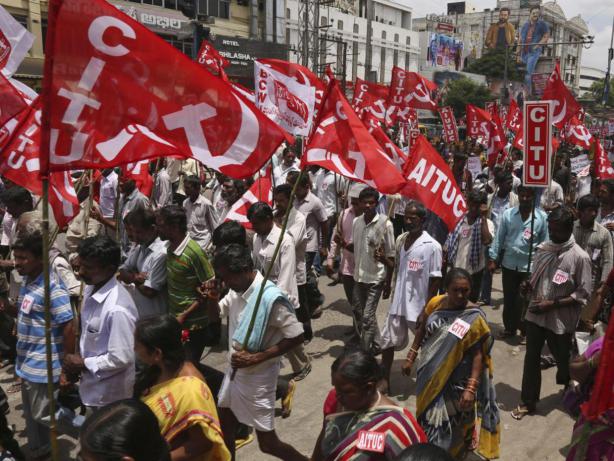David Ruccio During the past couple of weeks, the only real India economic news in the Western press was the decision by “the Ranbir Kapoor of banking,” Raghuram G. Rajan, to step down from his position as the head of the Reserve Bank of India. But we read almost nothing about the 2 September nationwide strike by 150 million Indian workers [ht: Magpie], which was certainly the largest strike in India’s long labor history—and may have been the largest general strike in world history. As Vijay Prashad explained, Few front page stories, fewer pictures of marching workers outside their silent factories and banks, tea gardens and bus stations. The sensibility of individual journalists can only rarely break through the wall of cynicism built by the owners of the press and the culture they would like to create. For them, workers’ struggles are an inconvenience to daily life. It is far better for the corporate media to project a strike as a disturbance, as a nuisance to a citizenry that seems to live apart from the workers. It is middle-class outrage that defines the coverage of a strike, not the issues that move workers to take this heartfelt and difficult action. The strike is treated as archaic, as a holdover from another time. It is not seen as a necessary means for workers to voice their frustrations and hopes.
Topics:
David F. Ruccio considers the following as important: Uncategorized
This could be interesting, too:
tom writes The Ukraine war and Europe’s deepening march of folly
Stavros Mavroudeas writes CfP of Marxist Macroeconomic Modelling workgroup – 18th WAPE Forum, Istanbul August 6-8, 2025
Lars Pålsson Syll writes The pretence-of-knowledge syndrome
Dean Baker writes Crypto and Donald Trump’s strategic baseball card reserve
David Ruccio
During the past couple of weeks, the only real India economic news in the Western press was the decision by “the Ranbir Kapoor of banking,” Raghuram G. Rajan, to step down from his position as the head of the Reserve Bank of India.
But we read almost nothing about the 2 September nationwide strike by 150 million Indian workers [ht: Magpie], which was certainly the largest strike in India’s long labor history—and may have been the largest general strike in world history.
As Vijay Prashad explained,
Few front page stories, fewer pictures of marching workers outside their silent factories and banks, tea gardens and bus stations. The sensibility of individual journalists can only rarely break through the wall of cynicism built by the owners of the press and the culture they would like to create. For them, workers’ struggles are an inconvenience to daily life. It is far better for the corporate media to project a strike as a disturbance, as a nuisance to a citizenry that seems to live apart from the workers. It is middle-class outrage that defines the coverage of a strike, not the issues that move workers to take this heartfelt and difficult action. The strike is treated as archaic, as a holdover from another time. It is not seen as a necessary means for workers to voice their frustrations and hopes. The red flags, the slogans and the speeches — these are painted with embarrassment. It is as if turning one’s eyes from them would somehow make them disappear.

